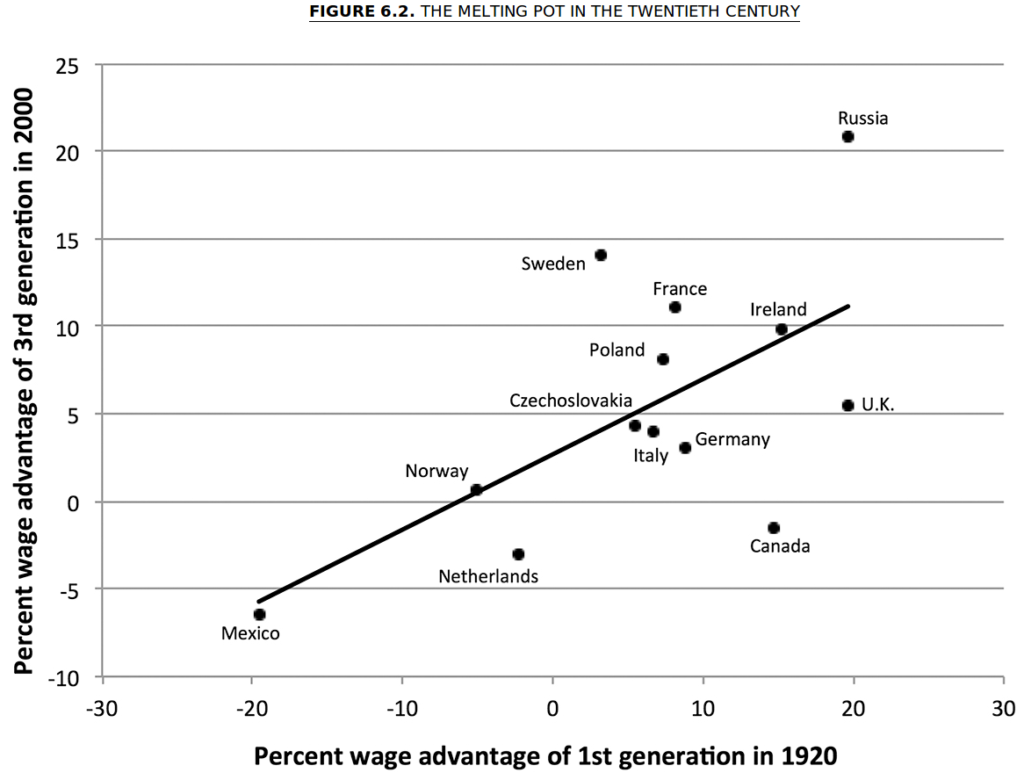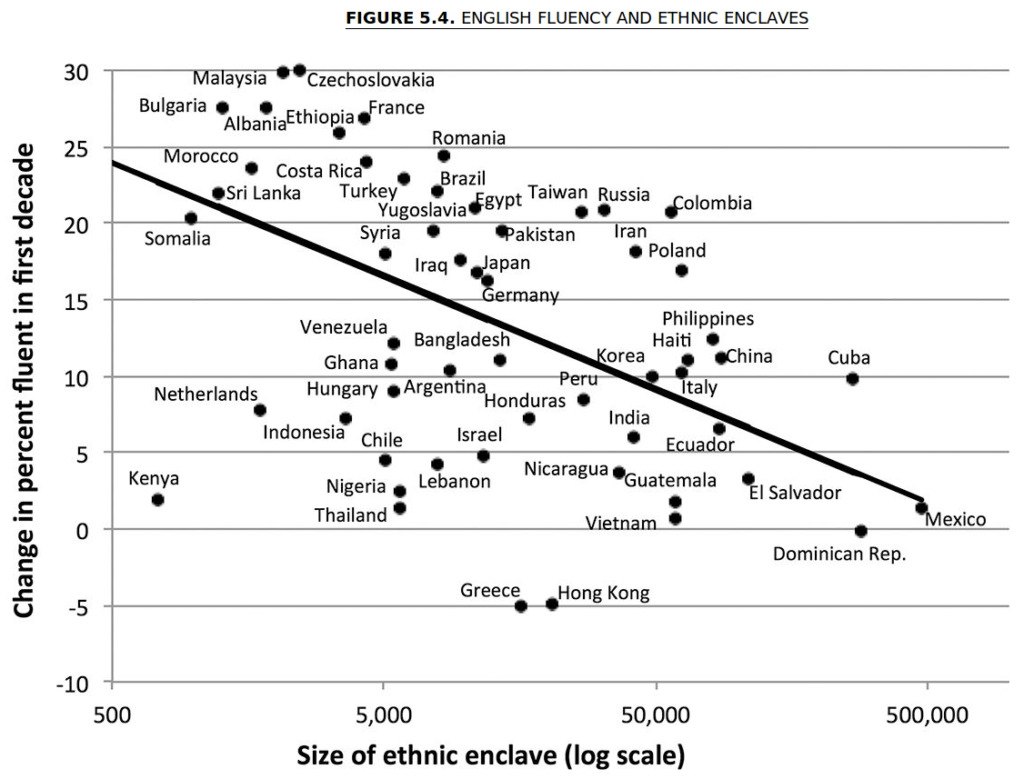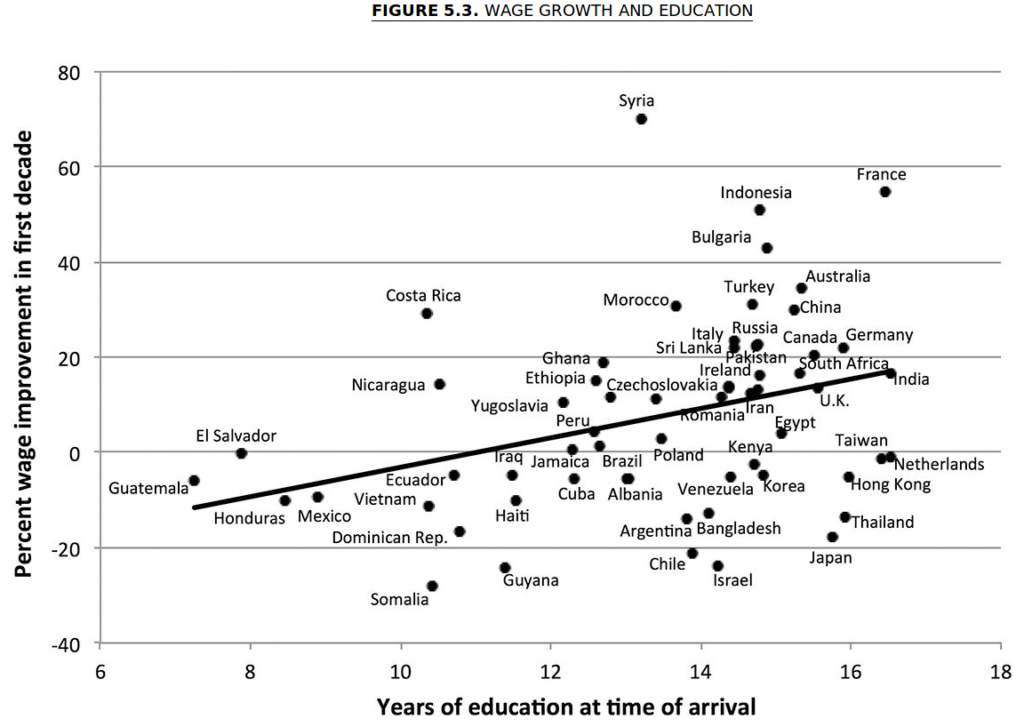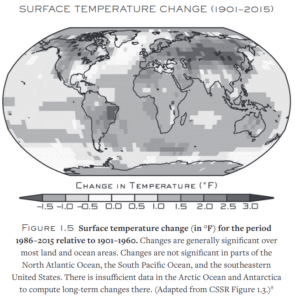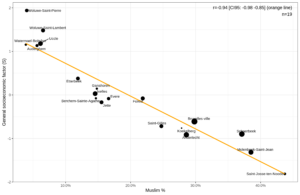Next up in my review series I picked something anti-libertarian. I ended up with We wanted workers, based on a recommendation by Heiner Rindermann. It turned out to be a great choice. Borjas is my type of researcher, in his words:
One underlying theme of this book is that viewing immigrants as purely a collection of labor inputs leads to a very misleading appraisal of what immigration is about, and gives an incomplete picture of the economic impact of immigration. Because immigrants are not just workers, but people as well, calculating the actual impact of immigration requires that we take into account that immigrants act in particular ways because some actions are more beneficial than others. Those choices, in turn, have repercussions and unintended consequences that can magnify or shrink the beneficial impact of immigration that comes from the contribution to widget production.
For instance, it is self-evident that not every person in a sending country wants to be an emigrant. People often choose to stay in their place of birth, despite the sizable economic gains to be had by moving from one place to another. The movers almost certainly differ in significant ways from the stayers; they have different motivations, different capabilities, and so on. To calculate the impact of immigration correctly, it is not just a matter of counting the number of bodies that filled the slots in the proverbial widget factory. We also need to worry about which types of persons the receiving country ended up attracting. It would not be surprising if a receiving country, channeling Max Frisch’s observation through Obi-Wan Kenobi, concluded that perhaps “those were not the workers we were looking for.”
…
We Wanted Workers summarizes what we learn about the economic impact of immigration on the United States once we view it from this broader perspective. Although I am myself an immigrant, this is not an ideological sermon on immigration; there is no attempt to moralize or to either canonize or demonize immigrants. Instead, a recurring refrain is that the economic consequences of immigration are not evenly distributed among the many people that immigration affects. Put simply, some people win and some people lose. Devoid of all the ideological trappings and all the deliberate obfuscations, immigration can be viewed for what it plainly is: another redistributive social policy.
Under some conditions, the grand total of the gains accruing to the natives who win will exceed the grand total of the losses suffered by the natives who lose, so that immigration (like international trade) increases national wealth. It is also entirely possible that these gains could be greatly reduced or even reversed by other real-world circumstances, such as the fiscal burden that may arise from excessive immigrant participation in public assistance programs or the social costs resulting from an unassimilated foreign-born population.
Instead of leading to grand universal statements, the broader and more realistic approach forces us to think about what determines the economic impact of immigration and to isolate the various factors that can make immigration either more beneficial or more costly. That approach also helps to identify the groups that win and the groups that lose. In the end, these insights could be used to formulate an immigration policy that, if the United States wanted to, would make immigration more advantageous and would more evenly spread the gains and losses.
…
Paul Collier, a renowned British public intellectual and a professor at Oxford University, published a book in 2013 entitledExodus: How Migration Is Changing Our World. Collier himself had never conducted research on immigration issues in his academic work; instead, he had written a number of influential books on such diverse topics as the impact of government aid to poor countries and the politics of global warming. The main point of Exodus is that the presumed large benefits that immigration can impart to receiving countries may be greatly reduced as the number of immigrants increases substantially and the migration flow continues indefinitely. Large and persistent flows, Collier argued, could have many other (sometimes harmful) unintended consequences.
Regardless of how one feels about this conclusion, I found it particularly insightful to read Collier’s overall perception of the many social science studies that he reviewed as he prepared to write the book:
A rabid collection of xenophobes and racists who are hostile to immigrants lose no opportunity to argue that migration is bad for indigenous populations. Understandably, this has triggered a reaction: desperate not to give succor to these groups,social scientists have strained every muscle to show that migration is good for everyone.1
This is as damning a statement about the value of social science research on immigration as one can find. As far as I know, Collier is the first distinguished academic to state publicly that social scientists have attempted to construct an intricate narrative that shows the measured impact of immigration to be “good for everyone.”
I have never made such an assertion in public. But I have long suspected that a lot of the research (particularly, but not exclusively, outside economics) was ideologically motivated, and was being censored or filtered to spin the evidence in a way that would exaggerate the benefits from immigration and downplay the costs.
Many conceptual assumptions and statistical manipulations can affect the nature of the evidence. A computer program that analyzes data from a survey of millions of persons can have hundreds, if not thousands, of lines of code, and a seemingly innocuous programming assumption here or sample selection there can lead to very different results. Moreover, dissecting a published study to isolate precisely which conceptual assumption or statistical manipulation may be responsible for a specific claim involves a lot of time and effort, and there is little professional reward for playing detective.
We Wanted Workers argues that it is crucial to carefully examine the nuts and bolts of the underlying research before one can trust the claims made about the impact of immigration. I will try to make the discussion of the data that are often used in immigration research, and how those data are manipulated, as transparent as it can possibly be. The book, in fact, will provide various examples in which arbitrary conceptual assumptions, questionable data manipulations, and a tendency to overlook inconvenient facts help build the not-so-subtle narrative that Collier detected.
There is a lot more like this, but you will have to read it yourself. Now, what kind of data does Borjas present? I repost his central (IMO) figures:
(in reverse order because WordPress is stupid)
Borjas concludes:
Finally, it is wise to be skeptical of expert opinion in politically contentious topics like immigration. The strong influence of the narrative that immigration is “good for everyone” makes it imperative that we carefully examine the nuts and bolts of exactly how we learn certain things about its impact.
Unfortunately, the nuts and bolts are often hidden in obscure technical discussions, making them inaccessible to most nonspecialists. That is why I have repeatedly attempted to clarify the underlying details. A key lesson: the nuts and bolts matter. An assumption here or a data manipulation there makes a difference, and it can often make a big difference in determining the takeaway point. Estimates of the impact of immigration and promises of what will happen are intrinsically tied to the choice of conceptual assumptions and statistical manipulations. And we should treat those choices, particularly when there exists a temptation to further an ideological narrative, with all the suspicion they deserve.
Before I turn to the evidence, let me note that I began this book by describing some of the personal circumstances that led, in a very circuitous way, to my professional interest in immigration. My role in the trenches of immigration research raises a couple of paradoxes that many readers might have detected and be curious about. Let me address the first of these puzzles now. As Paul Collier observed, social scientists “have strained every muscle” to build the politically correct narrative that immigration is good for everyone. I never did that type of heavy lifting. Nevertheless, my career somehow progressed nicely.
I was able to get away with this because the issues addressed by the main research papers I wrote on immigration—such as how to measure assimilation or how to measure the labor market impact or how to measure the economic gains for the native population—skirted the ideology that increasingly suffocates the immigration debate. They were how-to papers—technical contributions that addressed very specific questions about how to measure a number of great interest.
Many of the answers implied by my how-to papers did not support the narrative, so they might seem easy to ignore. My solutions are difficult to discount, however, because they are the solutions that follow easily from the theory and statistical methods that are widely used in mainstream economics. For better or worse, little in my research departs from the standard ways in which economists think about and measure outcomes in the labor market.
It has been three decades since I began to think about immigration seriously. What do I take away from the evidence? Which insights do I find most useful when the time comes to think about the future of immigration policy?
•Not everyone wants to move to the United States, and those who choose to move are fundamentally different from those who choose to stay behind. The nature of the selection, however, can vary dramatically from place to place. The United States will attract high-skill workers when we offer a higher payoff for their abilities, but the high-skill workers will stay behind if they can get a better deal at home. The fact that different kinds of people will want to move out of different countries (and that the skills they bring are not always transferable to the American setting) creates considerable inequality in economic outcomes across immigrant groups at the time of their arrival.
•Assimilation is not inevitable. The speed of economic assimilation—the narrowing of the gap in economic outcomes between immigrants and natives—depends crucially on conditions on the ground. Sometimes those conditions speed up the process, and sometimes they slow it down. In fact, economic assimilation today is far slower than it was two or three decades ago. This trend, however, masks crucial differences in the assimilation of different immigrant groups. Some groups assimilate very rapidly and some do not. Typically, groups that are more skilled and that do not have access to large and vibrant ethnic enclaves assimilate faster.
•The experience of the descendants of the Ellis Island–era immigrants shows that the melting pot did indeed melt away the differences in economic outcomes across those ethnic groups, but it took nearly a century for the melting pot to do its job. The same process may be starting to take place with the current mass migration, as the children of today’s immigrants earn higher wages and exhibit less ethnic inequality than their parents did. But we truly do not know how things will pan out in the next few decades, because the economic and social conditions that kept the melting pot busy throughout the 1900s may not be reproducible in the next century.
•Immigrants affect the job opportunities of natives. The laws of supply and demand apply to the price of labor just as much as to the price of gas. The data suggest that a 10 percent increase in the number of workers in a particular skill group probably lowers the wage of that group by at least 3 percent. The temptation to play with assumptions and manipulate the data, however, is particularly strong when examining this very contentious issue, so the reported effects often depend on such assumptions and manipulations. Our look inside the black box of how research is done suggests one lesson: the more one aggregates skill groups, the more likely one hides away the specific group of affected workers—making it harder to document whether immigration made anyone worse off. The more laser-focused the group of native workers examined, the easier it is to detect that immigration affected the targeted group.
•Immigrant participation in the workforce redistributes wealth from those who compete with immigrants to those who use immigrants. But because the gains accruing to the winners exceed the losses suffered by the losers, immigrants create an “immigration surplus,” a net increase in the aggregate wealth of the native population. However, the surplus is small, about $50 billion annually. That calculation also suggests a half-trillion-dollar redistribution of wealth from workers to firms. The surplus could be much larger, if there are many exceptional immigrants and if some of the unique abilities brought by those immigrants rub off on the native workforce.
•The welfare state introduces the possibility that the gains measured by the immigration surplus might disappear if immigrants are net users of social assistance programs rather than net contributors. There is little doubt that immigrants receive assistance at higher rates than natives, creating a fiscal burden in the short run. In the long run, immigration may be fiscally beneficial because the unfunded liabilities in Social Security and Medicare are unsustainable and will require either a substantial increase in taxes or a substantial cut in benefits. Immigrants expand the taxpayer base, perhaps helping to spread out the burden. It is extremely difficult to accurately measure the fiscal benefit in the long run, however, because much depends on the assumptions made about the future path of taxes and government spending.
•It is probably not too far-fetched to conclude that, at least in the short run, the economic gains captured by the immigration surplus are offset by the fiscal burden of providing public services to immigrants. Given the scale and the skill mix of the immigrants who entered our country in the past few decades, the economic impact of immigration, on average, is at best a wash. This near-zero effect conceals a substantial redistribution of wealth from workers to firms.
•The argument that open borders would exponentially increase the economic gains from immigration depends crucially on the perspective of immigrants as workers rather than immigrants as people. The multi-trillion-dollar gains promised by the proponents of open borders could quickly disappear (and even become an economic debacle) if immigrants adversely influence the social, political, and economic fabric of receiving countries. In the end, the impact of open borders will depend not only on whether the movers bring along their raw labor and productive skills, but also on whether they bring the institutional, cultural, and political baggage that may have hampered development in the poor countries.
Readers of this blog will not be surprised by his conclusions or results. My main complaint against Borjas is that he spends too much time on economist things like supply shocks and too little time on other important outcomes like the net fiscal contribution, crime and so on., and no time on how immigration changes the media discourse to the worse. Borjas is also quiet on the ultimate causes of social inequality: between countries, between groups of people within countries, and between individuals within groups within countries. Like other economists, he mostly discusses the vague concept of skills without discussion of just what skills. Mostly, he takes education as a proxy, but in one passage he comes close to realizing an important point:
However, the reason that originating in a rich country matters is not just that people born in those countries are better educated. Even among immigrants who have the same education, those who come from richer countries still do better. It may be that the skills acquired in industrialized economies tend to be equally useful in other industrialized economies, while the skills acquired in developing countries are less useful in an industrialized setting.16 Put differently, a larger fraction of the skills acquired in a rich country “survive” the move to the United States, further improving the economic performance of those immigrants.
Overall, I highly recommend this book. It is well-written and not very technical, yet it covers a lot of ground.

